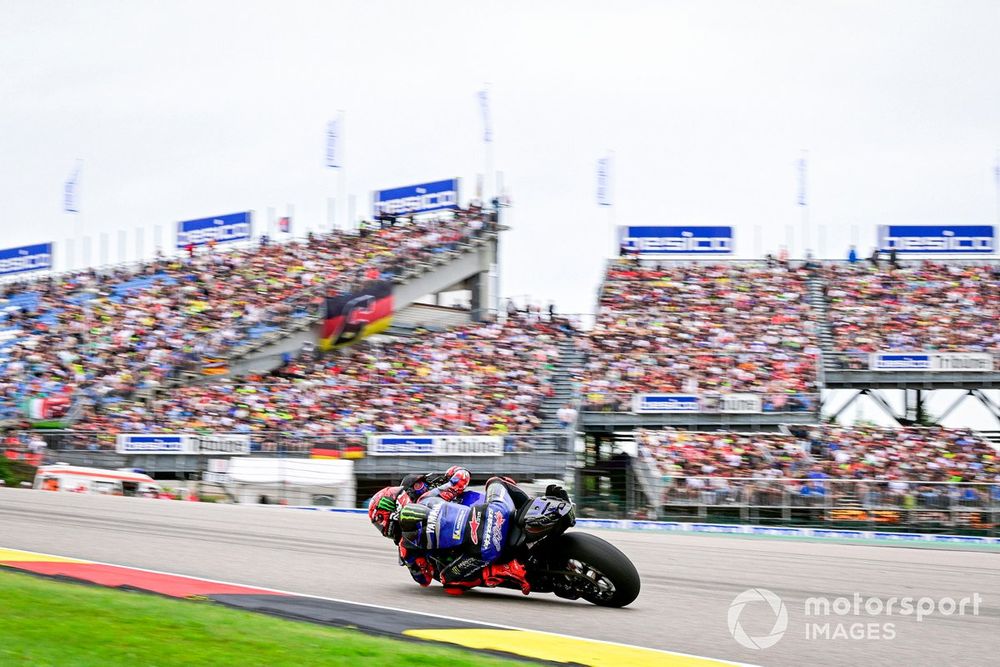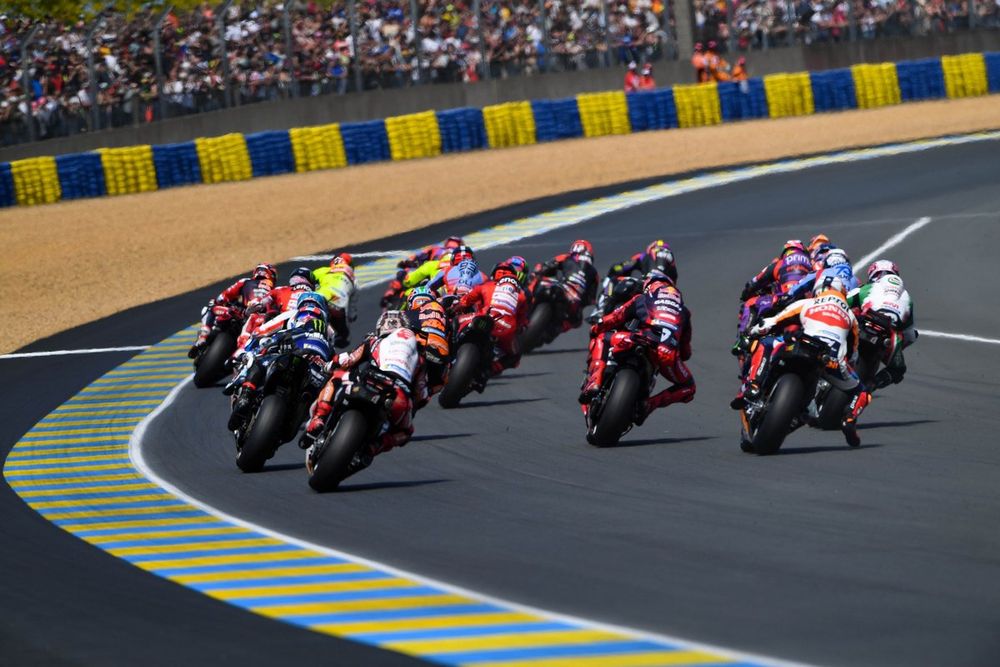With the new regulatory framework that came into force following a unanimous vote by all MotoGP manufacturers, Yamaha and Honda were placed in the D class. This allows them, among other things, to ride with their regular rider line-up as many times as they want and to make engine modifications — something that is not allowed to the rest.
But a simple glance at the championship standings might make you think that this favourable treatment has not only hurt the two Japanese companies in the championship, but has even been counterproductive for them.
After the first nine rounds on the calendar, the best-placed Yamaha rider is Fabio Quartararo, who is 15th in the standings with a total of 44 points. Last year, the Frenchman was also the most competitive Yamaha rider, but he was four places higher in the standings and had accumulated 65 points.
His peaks were higher in 2023 too. Quartararo had placed third in Austin and finished in the top 10 on five occasions, something he has achieved only twice in 2024. His best grand prix result so far remains a seventh place back at the second round in Portugal.
On the other side of the garage, the decline is even greater. At this stage of the season in 2023, Franco Morbidelli was 12th, one place behind Quartararo and six points back. Now Alex Rins, who filled the vacancy left by the Italian when he signed for Pramac Ducati, is 21st and has just eight points to date this season. In mitigation, it is worth noting however that Rins began his Yamaha career in a rather poor physical state, having suffered a badly damaged leg in a crash at Mugello just over a year ago.
If the Yamaha example is already striking in itself, the Honda example is blatant. At this point in the previous season, Rins was its spearhead after winning in Austin. Despite being out of action for four races after his Mugello crash, he was Honda’s best runner in 13th place in the standings with 47 points. Now Joan Mir leads HRC’s MotoGP bid, although the Spaniard is 18th, with just 13 points in the bag and having yet to cross the finish line inside the top 10.

Nakagami gained 12 seconds of race time for Honda compared in a year, but the gap to the front remained the same
Photo by: Gold and Goose / Motorsport Images
Just behind him is Johann Zarco (19th), one point back. Takaaki Nakagami is 20th, with 10 points, while further back still is Luca Marini in 23rd, the last of the full-time riders. He scored his first point in Germany by finishing 15th.
At the Sachsenring, the best Honda was 14th with Nakagami at the helm. He was 12 seconds faster in terms of race time compared to 2023, when he was also the quickest Honda. But that was exactly the difference between Jorge Martin’s time to win in 2023 and Francesco Bagnaia’s time to clinch victory this time around. By the same token, Quartararo was 18 seconds faster than a year ago, which suggests that Yamaha is reacting a little quicker than Honda.
Any regulatory change takes time to begin to bear fruit, even more so for two Japanese companies, faithful for decades to their very conservative philosophy. Concessions are inviting them to change the pace and Yamaha seems to be more open to trying new routes.
Yamaha and Honda are targeting the test after the San Marino Grand Prix as the event where the effect of the concessions can be assessed
The additions of Max Bartolini as technical director and Marco Nicotra in the aerodynamics division epitomise the new look that is taking hold. In addition to signing these two mainstays from Ducati, Yamaha has shaken up its protocols and moved much of the operations and design of important parts of the bike from Japan to Europe. Using Dallara in Italy has greatly reduced the lead time of an aerodynamic component to go from design to manufacture to testing. Before, everything had to go through Japan, where processes sometimes took what felt like forever.
«Not only has communication improved a lot, but also everything goes much faster,» Quartararo acknowledged a few days ago when asked by Motorsport.com whether the reaction promised by Lin Jarvis which ultimately convinced him to renew his terms at Yamaha has been realised.
«We ask for something and it is tested in much less time than before. The commitment I asked for when I renewed has been maintained.»
The other promise Quartararo sought, to bring back the satellite team, was formalised last month when the incorporation of Pramac from 2025 was made official.

Race times from the Sachsenring compared to one year ago suggest Yamaha is improving at a faster rate than Honda
Photo by: Gold and Goose / Motorsport Images
Yamaha has already raced with two different engine configurations thanks to the concessions, which have thawed its and Honda’s power unit development. But Honda is much lazier when it comes to experimenting with its traditional way of doing things. In fact, until recently, the Japanese technicians were still working on the ideal engine concept for their bike. In the current version of the RC213V, the engine rotates forwards, while the rest of the grid rotates backwards.
«It was already clear to us that we needed to change,» said Mir a few weeks ago. «We just needed them [the Japanese engineers] to be convinced.»
Whether they do or don’t, both Yamaha and Honda are targeting the test after the San Marino Grand Prix as the event where the effect of the concessions can be assessed. «We expect to have a quite different bike there, and that will be a reflection of all the conclusions of this first part of the season,» a source in Honda’s technical department tells Motorsport.com.
At the start of summer break, the first point of evaluation of the concessions introduced, neither of the two Japanese factories has come close to the 35% of points they needed to move up to the next tier. Yamaha has dropped by 6% (21%) and Honda by 5% (16%).
Although less dramatic, the same is true of KTM, which has dropped 1% of its points percentage, and Aprilia, which has risen 5% to keep both in the C class. Ducati, from its vantage point of dominance, remains the only manufacturer in Group A, keeping above 95% of the points. Thus, all teams will continue until the end of the season under the same conditions as far as concessions are concerned.

The jury is out on whether MotoGP’s concession rules have made the right impact
Photo by: Marc Fleury








